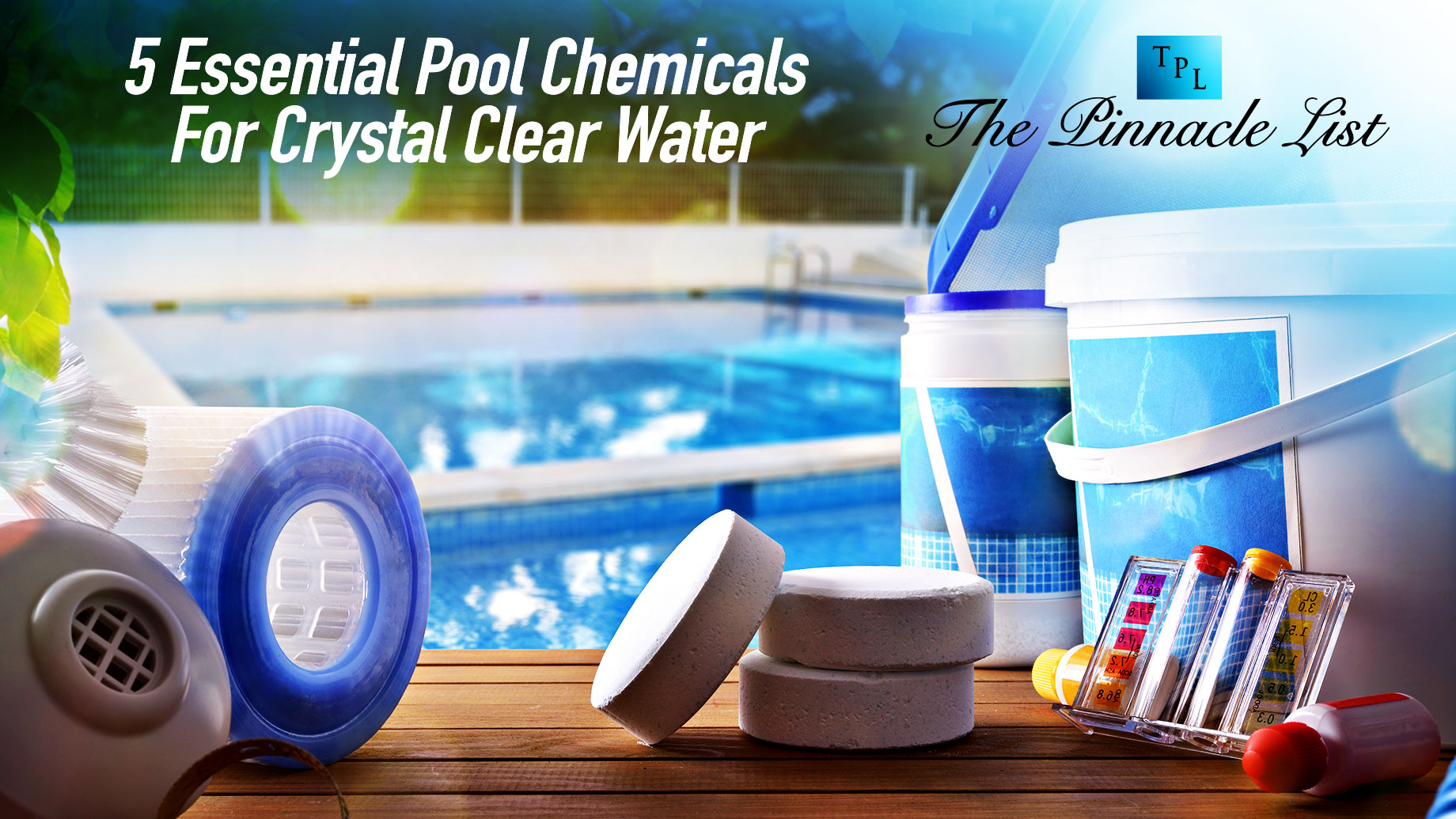
Having crystal-clear water in your swimming pool is not only visually appealing but also essential for maintaining a safe and healthy swimming environment. Achieving and maintaining that sparkling clarity requires the use of various pool chemicals. In this article, we will explore five essential pool chemicals that play a crucial role in keeping your pool water crystal clear.
Chlorine
Chlorine is the most common and widely used pool chemical for disinfection. It effectively kills bacteria, viruses, and other harmful microorganisms that can contaminate the water and cause health issues. Chlorine comes in different forms, such as granules, tablets, or liquid, allowing pool owners to choose the most convenient option for their needs. Regular testing and maintaining appropriate chlorine levels help prevent algae growth, eliminate germs, and ensure a clean and clear pool.
pH Balancers
Maintaining the correct pH level in your pool water is vital for optimal swimmer comfort and preventing equipment damage. The pH scale measures the acidity or alkalinity of the water, with a range of 0 to 14. Ideally, the pH level should be between 7.4 and 7.6, slightly above neutral. pH balancers, such as pH increasers (sodium carbonate) or pH reducers (sodium bisulfate), are used to adjust the pH level and keep it within the recommended range. Proper pH balance not only enhances water clarity but also optimizes the effectiveness of other pool chemicals.
Algaecides
Algae can quickly turn a sparkling pool into a murky and uninviting swamp. Algaecides are chemicals designed to prevent and control algae growth in your pool. They work by disrupting the cellular structure of algae, preventing it from flourishing and spreading. Algaecides come in different types, including copper-based, silver-based, and polyquat-based. Regularly treating your pool with algaecides, especially during warmer months, helps keep algae at bay and ensures your water remains clear and inviting.
Shock Treatments
Even with regular use of chlorine and algaecides, pools can still accumulate organic contaminants, such as sweat, sunscreen, and body oils, which can lead to dull and cloudy water. Shock treatments are highly concentrated doses of chlorine that help oxidize and eliminate these organic compounds, restoring water clarity and maintaining a sanitary swimming environment. Shocking the pool is typically recommended once a week or after heavy pool usage or rainstorms. It’s important to follow the manufacturer’s instructions and allow sufficient time for the chlorine levels to return to safe levels before swimming.
Stabilizers
Stabilizers, also known as cyanuric acid, are chemicals that help protect chlorine from degradation caused by sunlight. When exposed to sunlight, chlorine dissipates rapidly, reducing its effectiveness in sanitizing pool water. Stabilizers form a protective shield around chlorine, slowing down its breakdown process and ensuring a longer-lasting and more efficient chlorine present in the pool. By using stabilizers, pool owners can reduce chlorine consumption and maintain optimal levels, resulting in clearer and safer water.
Achieving and maintaining crystal-clear water in your swimming pool requires the careful use of essential pool chemicals. Chlorine, pH balancers, algaecides, shock treatments, and stabilizers are five key chemicals that play vital roles in ensuring water clarity, sanitation, and swimmer safety. By regularly testing and adjusting these chemical levels, pool owners can enjoy a clean and inviting pool throughout the swimming season. Remember to follow the manufacturer’s instructions and consult with a pool professional to ensure proper usage and avoid any adverse effects. With the right chemical balance, you can dive into a refreshing and crystal-clear pool all summer long.